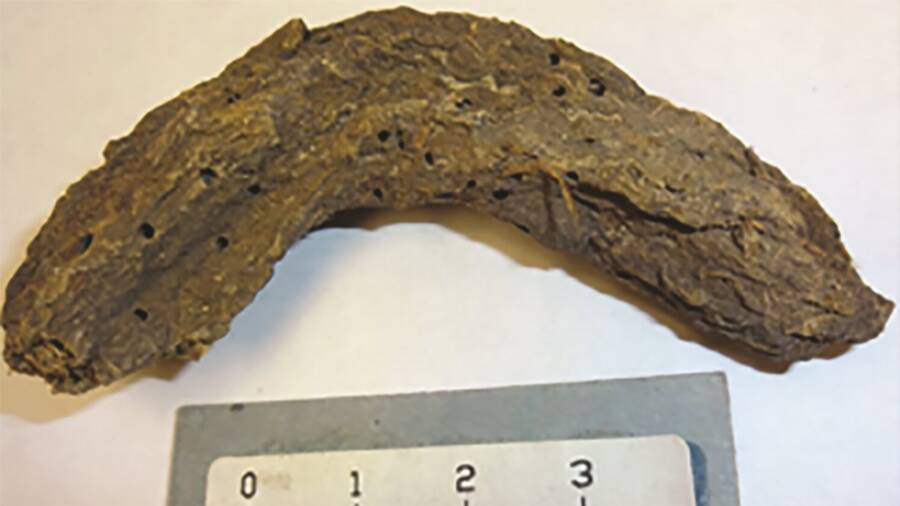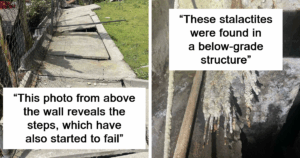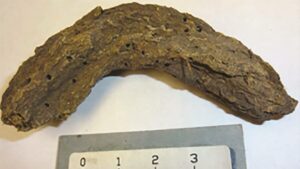Ancient Samaritan Mosaic with Cryptic ‘Good Luck’ Message Discovered in Israel—What Secrets Do Its Crop Images Hold?
So, picture this: workers digging around in Kafr Qasim, Israel, getting ready to slap up some housing, and bam—they stumble on a 1,600-year-old Samaritan settlement complete with jaw-dropping mosaic floors that look like they belong in some Roman luxury pad. Now, here’s the kicker: this site isn’t just a pile of old stones; it’s like a real-life soap opera wrapped in ancient ruins, telling stories of wealth, wild revolts, and survival through chaos. Makes you wonder, right? How often do you just trippingly find a forgotten slice of history right before Monday morning construction? And the mosaics with grapes, watermelons, and a “Good Luck!” in ancient Greek? Now, that’s a party message from the past if ever I saw one. Dive into this mix of prosperity and pandemonium that’s been buried for centuries and suddenly popped up where new houses were supposed to go. Curious yet?
While conducting salvage excavations ahead of housing construction in Kafr Qasim, Israel, workers recently happened upon this mosaic amid the ruins of an ancient Samaritan settlement.

Israel Antiquities AuthorityArchaeologists believe that the Samaritan settlement uncovered in Kafr Qasim existed for 400 years.
During excavations at the archaeological site of Kh. Kafr Ḥatta in Israel, archaeologists recently came across the stunning remains of a well-preserved, 1,600-year-old Samaritan settlement filled with incredible finds, including ornate mosaic flooring.
Archaeologists say it’s also a rare site that encapsulates both the “prosperity and the decline” of the Samaritans. Straddling the end of the Roman period and the beginning of the Byzantine period, this ancient Samaritan settlement shows signs of both wealth and luxury — as well as revolution and war.
The Discovery Of An Ancient Samaritan Settlement With Mosaic Flooring At Kh. Kafr Ḥatta

Israel Antiquities AuthorityThe settlement was found at Kh. Kafr Ḥatta ahead of the construction of a new neighborhood.
According to a statement from the Israel Antiquities Authority, the Samaritan settlement was found during excavations at the archaeological site Kh. Kafr Ḥatta, conducted prior to the establishment of a new neighborhood on the site.
At the site, archaeologists found traces of several structures that hint at the former existence of a large and prosperous Samaritan settlement. Archaeologists believe that the settlement dates back roughly 1,600 years, and that it existed for 400 years between the end of the Roman period and the end of the Byzantine period.
“The size and splendor of the buildings discovered, the quality of their mosaic floors and the impressive agricultural installations, all point to the great wealth and prosperity of the local Samaritan community over the years,” said Alla Nagorsky and Dr. Daniel Leahy Griswold, the Israel Antiquities Authority’s excavation directors at the site.
Indeed, archaeologists made a number of stunning finds at the site. They uncovered the remains of an olive press, a public purification bath (known as a miqveh), as well as a number of highly detailed decorative mosaics.
In one of the buildings, they uncovered a mosaic floor decorated with geometric patterns and images of “acanthus leaves combined with rare decorations of fruits and vegetables – such as grapes, dates, watermelons, artichokes and asparagus.” Near the entrance of the mosaic was an inscription in Greek that wished the building’s owner “Good Luck!”

Israel Antiquities AuthorityA piece of mosaic floor uncovered at the Samaritan settlement.
But archaeologists also found traces of hardship at the settlement. Over its 400 years of existence, the Samaritans enjoyed prosperity, but also suffered through revolution and war.
The Rise And Fall Of This Prosperous Samaritan Community

Israel Antiquities AuthorityWell-preserved ceramic objects found during excavations at the Samaritan settlement.
The archaeological site of Kh. Kafr Ḥatta is an important one in Samaritan history. It’s described as the birthplace of the Samaritan magician Menander, whose predecessor Simon Magus “was considered the father of the Gnostic sects and [was] one of Christianity’s first converts.”
But while the newly-unearthed settlement was clearly once prosperous, archaeologists also found signs of tumultuous change, likely connected to political upheaval in the region. Specifically, archaeologists suspect that the settlement transformed during a period of Samaritan revolts against Byzantine rule. These took place in the fifth and sixth centuries C.E. as Samaritans resisted restrictive Byzantine rules about religion.

Israel Antiquities AuthorityThe grand mosaic floors at the settlement were damaged during a particularly tumultuous period in Samaritan history.
“The wealth and luxury of the buildings were replaced by oil production and agricultural installations,” Nagorsky explained. “New walls damaged the mosaic floors, and the magnificent capitals and columns were integrated within the new walls.”
But while most Samaritan sites were destroyed during this period, the settlement at Kh. Kafr Ḥatta showed surprising flexibility. In the face of violence and change, it adapted.

















